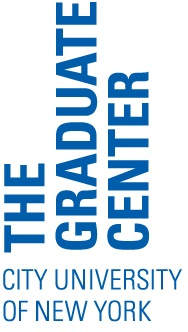Careers in Nonprofit Development
By Erin Garrow

Photo by Rawpixel
Development is one of the best-compensated areas of the nonprofit world, and this fast-growing field is worth your consideration.
Nonprofit Development: An Overview
Nonprofits and educational institutions garner income from fundraising, which is also called “development” or “institutional advancement.” Though many nonprofits collect revenue from user fees (admissions fees, tuition, etc.) and though publicly-funded nonprofits—like the CUNY colleges!—draw income from state and local taxes, these funds are rarely enough to cover a nonprofit’s costs (maintenance, salaries, etc.), let alone any new projects that the nonprofit seeks to undertake (e.g., a new building, fellowship, exhibit, or initiative). Fundraisers—usually called Development Officers—fill this gap!
Why GC Alumni Succeed in Development
Development officers care about the mission of their nonprofit organizations. They listen to those within their organization whose initiatives need funding—to curators for exhibitions, to faculty for institutes, to administrators who need new facilities—and to those who care or might care about it: visitors seeking a cultural experience, industry representatives looking for new research, and successful business people looking to give back. These fundraisers articulate the pith of each party’s interest, create proposals that address the needs of the nonprofit and its donors, and deliver compelling presentations to smart audiences.
Through coursework, exams, teaching, and dissertation or thesis work, Graduate Center students develop both the passion and the research, writing, and presentation abilities that lead them to excel in these Advancement duties. GC’ers get students, peers, and faculty excited about whatever they themselves are teaching or researching. In addressing student performance and faculty demands, they develop type of detailed note-taking about people that is a cornerstone of Institutional Advancement.
Development Breakdown: Annual Giving, Major Gifts, and Foundation Relations
A nonprofit often divides its Development efforts into two areas: Annual Giving and Major Gifts. Some nonprofits also consider Foundation Relations, which the Council for Advancement and Support of Education (CASE), The National Council of Nonprofits, and other organizations discuss as part of the Development mix. In all three of these areas, the Development staff looks for folks with connections—or possible connections—to the nonprofit.
In Annual Giving, the Advancement team frequently looks to folks who have used the nonprofit before for smaller, regular donations: a college like the GC looks to all of its alumni (through the Annual Fund), a museum like the American Museum of Natural History looks to visitors (through Membership and other initiatives), and a radio station like WNYC looks to its listeners (through Sustaining Member programs).
In Major Gifts, the Advancement team frequently looks to folks who might support the mission of the nonprofit for large, one-time gifts. Often, a nonprofit’s buildings and institutes are named after the Major Donor who contributed the bulk of the funds for that initiative. Carnegie-Mellon University, The Met’s Iris and B. Gerald Cantor Roof Garden, and the GC’s own Amie and Tony James Gallery are just three examples of naming a nonprofit or its parts after Major Donors.
In Foundation Relations, a nonprofit sustains contact and partnerships with foundations, which are organizations charged with regularly donating funds. Where annual fund donations are often small but unrestricted (i.e., used for any purpose) and major gifts are restricted but large, funds from foundations are often moderately restricted (i.e., used according to the foundation’s mission) and moderately sized.
Next Steps
Where to Go to Learn More
The Association of Fundraising Professionals and the Association of Professional Researchers for Advancement are the field’s central professional organizations and offer good overviews of Development on their websites. The Chronicle of Philanthropy is the industry’s central publication and features a “foundation giving” section. The National Council of Nonprofits’s Fundraising page offers overviews of the legal and tax structures of charitable giving, tips on donor relations and online fundraising, and links to other resources.
Also, the Vault Insider Guide to Nonprofits (which GC students can download after creating a free Vault account) offers a good overview of fundraising’s place in the nonprofit world and how to prepare for a career therein, including how to hone relevant skills, how to prepare application materials, and where to find job listings. Versatile PhD (to which GC students and alumni have premium access after creating a free Versatile PhD account) provides the biographies, resumes, and question-and-answer-panel advice of fundraising professionals, especially in the “Careers in Higher Ed Development” forum in the “University Administration” section, and also in the “Nonprofits” section.
Where to Go to Find a Job
Check out the Jobs page of the Philanthropy News Digest (a service of The Foundation Center), the Careers page of the National Council of Nonprofits, CASE’s Job Seekers page (for foundations relations jobs; no student membership required), The Chronicle of Philanthropy’s Jobs page, WorkForGood.org’s resources for job seekers, and Idealist.org’s pages for jobs and internships.




